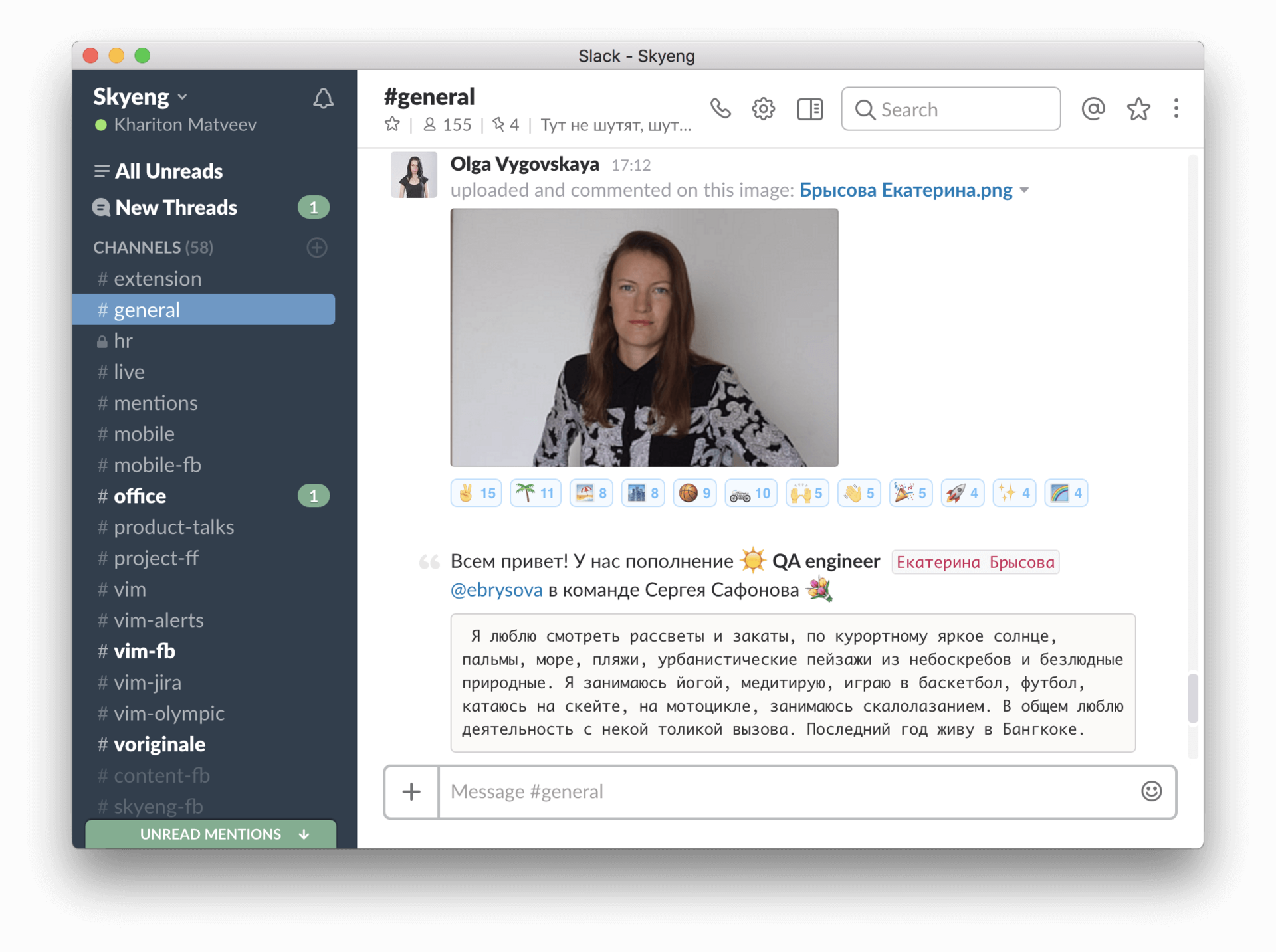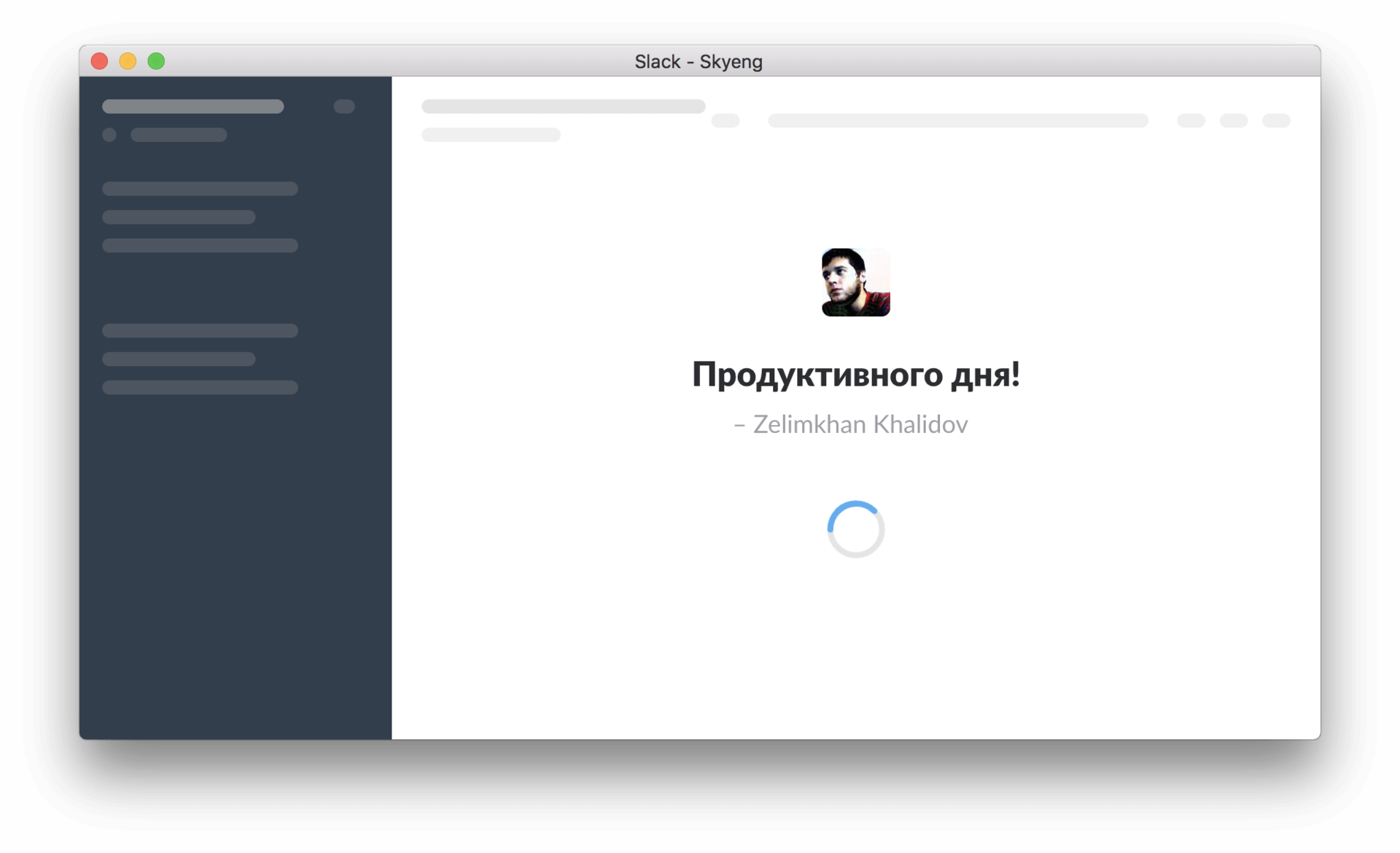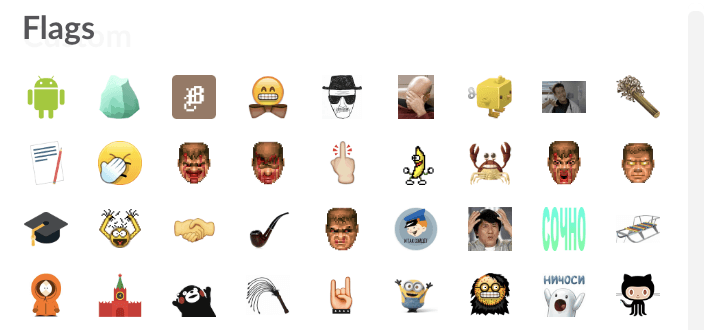How do we save half a million rubles a month with Slack

Skyeng School is actively growing, we have a lot of people. Some developers already have more than 70 people, and only a few of them are sitting in the office - most are scattered around the country and the world. In such conditions, properly aligned communications play a huge role, and today we will tell you about the main tool that allows us to keep the workflow in good shape.

Why did you decide to write another article about Slak?
The co-founder of the Skyeng school, Khariton Matveyev, explains: “ I saw a bunch of workers Slakov, and they are all dead, incomprehensible. You can not do it this way. If your Slak is not interesting to read, if there is no personalization in it, it does not work in full force . ” Khariton can be happy to talk for hours about various tools of Slack, which he actively uses in his work. But in this article there will be no such details - if only because all of them have already been described many times, for example, right here .
')
In general, Slak is one of our main working tools. A significant part of the team works on the remote, so the Slak channels replace many of us with an office, a smoking room, and a rest room. However, even the employees sitting at the adjacent tables prefer to communicate in Slak - simply because it is more efficient from the point of view of corporate communications.

Corporate communications?
In our work, communications occupy a very important place and take a lot of time. Actually, in a fairly large team, communication is more than half the workflow. We distinguish three types of communications: long, medium and urgent. Long is an email to which employees must respond within 24 hours. Average is just a Slack with a three-hour response. Urgent - this is "Skype" (hour) and the phone, but this is already if something exploded. Urgency of communication affects its price - the cheapest is the cheapest, and personal and telephone communication flies us a lot of money, because it distracts people and disrupts the work process.
And it is also important that communications take place at the right time. If the message arrives ahead of time - it distracts from work. If later - then there is a cant.

That is, Slack is your messenger for medium-term communication.
Not only. Slak’s strength is that he allows “play with time” flexibly. It is possible to solve urgent issues in it, and to read some not very important pieces every three days. It has integration with third-party applications needed in the work - Jira, Google Docs, Hangouts and so on and so forth. And he can not just mark messages as “unread”, but attach reminders to them that will ring when they need it — it helps to avoid the above mentioned distraction from work. Quickly set a reminder - and returned to the question when the opportunity. In general, in Slak, as in communications in general, there are also three levels of urgency to help control your time.


What are the three levels of urgency in Slak?
The most urgent messages are if someone opens a personal chat or mentions a person in the channel. Slak reports this by sound, icon, push in the phone. As a rule, it should be read quickly. The second level is communication within the channels. They can be read when a free minute appears - because if I need it urgently, I will be “ping” by the mention in this channel, and I will find out about it. Well, the third - information channels that help to keep abreast of what is happening, but not directly related to the current work duties. Executives, for example, once every three days, find time to read the channel with Aword user reviews on the App Store and Google Play. It is clear that special people monitor these reviews in real time, but the management does not need to do this.

Personalization was mentioned at the beginning of the article - what about it?
It is clear that our remote developers are deprived of the joy of personal communication with the team. We are trying to recover this loss in Slak. This is done with the help of conditional entertainment channels like #live, with the help of avatars, imoji and the most lively communication. So, all employees must have a completed profile with a photo. About each new employee, our HR reports in the #general channel, attaching a photo and a small essay about who it is, what it will do, what it enjoys, etc. This has a very positive impact on team cohesion - before, many employees were not aware of not only remote colleagues, they might not know who was sitting in the next room and what he was doing.

Previously, automatic release alerts arrived from Jira. It was not cool, because very few people understood what it was about. Now, each developer, closing the task, writes a couple of sentences in his own words - and everyone who subscribes to the channel has the opportunity to be happy for him, and most importantly, not only his teammates understand him, but also, for example, the guys from the business. If something fell somewhere and “Jenkins came,” then QA will tell you what happened.

When downloading, a message popped up by one of our colleagues pops up. We collected quotes and put them. This is much more fun than reading the default quote.

Well, we also encourage the use of imoji, we have our own custom-made sets, which the people actively use.

All this increases the involvement of employees in the team, wherever they are.

You are not confused in your channels with such an approach?
In order not to be confused in the channels, it is necessary, firstly, to limit their number, and secondly, to use certain understandable conventions when naming them. We always clean the stalled canals once every three months, fork overfilled and merge the same ones. Our channels have clear names - for example, everything related to the Vimbox platform begins with # vim-, and all the themes of the mobile application team come from # mobile-. The names and surnames of all employees - strictly Latin. All feeds are signed with brief content. And there are channel packages in divisions, to which new employees automatically subscribe.


Such a Slack is for sure paid! How much does it cost you?
We have 350 employees in Slak. Eight dollars each - it turns out about 168 thousand rubles a month.

168 thousand per messenger? Yes, this money can be ... (Substitute as desired)
350 employees in Slack is about 32 million rubles of the wage fund per month. 168 thousand - half a percent of this wage fund. In our work, communications play a very large role and are very expensive, therefore, if a messenger increases the effectiveness of these communications by more than half a percent, this is beneficial to us. Does Slack cope with this task? We are sure that yes, and we are talking about a more than three percent increase in labor productivity. That is, with Slak, we save at least half a million rubles a month.
Source: https://habr.com/ru/post/328252/
All Articles